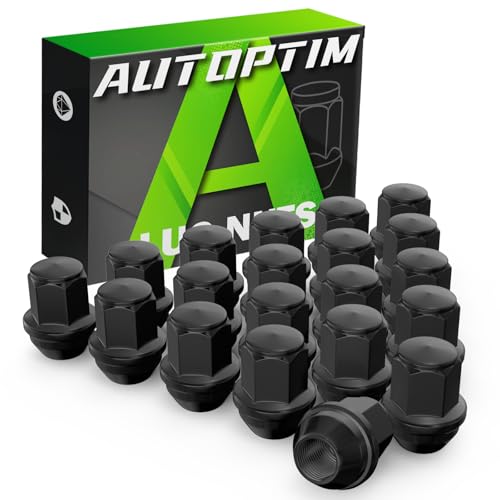That's a great thread, Tony, thanks for posting up the link.Check out this thread. They have a list of many applications and settings. They have some aggressive cams running as low as 6".
http://www.chevelles.com/forums/89-efi/875969-fitech-efi-tuning-tips-info-sharing-ideas-settings-etc.html
You are using an out of date browser. It may not display this or other websites correctly.
You should upgrade or use an alternative browser.
You should upgrade or use an alternative browser.
FiTech EFI Install
- Thread starter mustang7173
- Start date

Help Support 7173Mustangs.com:
This site may earn a commission from merchant affiliate
links, including eBay, Amazon, and others.
- Joined
- Sep 7, 2011
- Messages
- 2,036
- Reaction score
- 37
- Location
- Wake Forest, NC
- My Car
- 1971 Sports Roof Fastback (early model)
1973 Coupe -Under rebuild/restore
All,
Got the FiTech Go Street 400 and it is a beautiful thing. What a gorgeous piece of engineering marvel!
I have ordered a new Tanks Inc. gas tank, PA-4 fuel pump assembly, Rollover vent valve, Russells Twist-Lok hose ends, fittings, and Twist-LOK EFI fuel hose. Also, the Classic Tube Fuel Line Pump To Tank 2 Piece Original Steel 3/8" adds another $80.00.
After I purchased everything and got to thinking about the cost of this setup vs. the FiTech Command Center.
My Current expenditures is $476.46 and this does not include the return fuel line that will I install. The FiTech Command Center is $395.00.
One issue that directed me towards my current path is the location of devices. On the Command Center side, one mounting location was behind the driver’s side headlight, in the bucket area. With my current plan, I can integrate the setup to look mostly stock.
Purchased parts:
Tanks Inc. AN to NPT Fittings 660443

Russell Twist-Lok Hose Ends 624013

Russell Twist-Lok Hose Ends 624083

Russell Twist-Lok Hose 634373

Tanks Inc. Rollover Vent Valves VV

Tanks Inc. Fuel Tanks TF32A

Here is the parts that I have purchased to install the FiTech EFI system.
Keep You Posted!
mustang7173
Got the FiTech Go Street 400 and it is a beautiful thing. What a gorgeous piece of engineering marvel!
I have ordered a new Tanks Inc. gas tank, PA-4 fuel pump assembly, Rollover vent valve, Russells Twist-Lok hose ends, fittings, and Twist-LOK EFI fuel hose. Also, the Classic Tube Fuel Line Pump To Tank 2 Piece Original Steel 3/8" adds another $80.00.
After I purchased everything and got to thinking about the cost of this setup vs. the FiTech Command Center.
My Current expenditures is $476.46 and this does not include the return fuel line that will I install. The FiTech Command Center is $395.00.
One issue that directed me towards my current path is the location of devices. On the Command Center side, one mounting location was behind the driver’s side headlight, in the bucket area. With my current plan, I can integrate the setup to look mostly stock.
Purchased parts:
Tanks Inc. AN to NPT Fittings 660443

Russell Twist-Lok Hose Ends 624013

Russell Twist-Lok Hose Ends 624083

Russell Twist-Lok Hose 634373

Tanks Inc. Rollover Vent Valves VV

Tanks Inc. Fuel Tanks TF32A

Here is the parts that I have purchased to install the FiTech EFI system.
Keep You Posted!
mustang7173
My understanding is you still need a return line with the command center. Once nice benefit of the CC is that you can easily return to mechanical fuel pump.
I've read several users have had issues with the CC...most seem to be with higher horsepower applications. You might want to dig into that topic if you decide to go that route. Initially, that was the path I was considering, but after all the reading, I've decided to take the path you're currently on (when the time comes).
Thanks for keeping us updated. Look forward to the completion of this one!
I've read several users have had issues with the CC...most seem to be with higher horsepower applications. You might want to dig into that topic if you decide to go that route. Initially, that was the path I was considering, but after all the reading, I've decided to take the path you're currently on (when the time comes).
Thanks for keeping us updated. Look forward to the completion of this one!
- Joined
- Sep 7, 2011
- Messages
- 2,036
- Reaction score
- 37
- Location
- Wake Forest, NC
- My Car
- 1971 Sports Roof Fastback (early model)
1973 Coupe -Under rebuild/restore
All,
My head is about to explode with this project. So, I canceled the fuel line route and went with the GM LS Engine Fuel filter/combo pressure regulator. I only bought the fuel/regulator and some of the required fittings to complete the process.


http://www.tanksinc.com/index.cfm/page/ptype=product/product_id=453/category_id=61/mode=prod/prd453.htm
mustang7173
My head is about to explode with this project. So, I canceled the fuel line route and went with the GM LS Engine Fuel filter/combo pressure regulator. I only bought the fuel/regulator and some of the required fittings to complete the process.


http://www.tanksinc.com/index.cfm/page/ptype=product/product_id=453/category_id=61/mode=prod/prd453.htm
mustang7173
Last edited by a moderator:
- Joined
- Aug 14, 2014
- Messages
- 4,593
- Reaction score
- 1,630
- Location
- Madison, WI
- My Car
- 1971 Mach 1 w/408C stroker
Can I ask why are you using an external regulator? The FiTech unit has its own internal regulator so you don't need an external one.All,
My head is about to explode with this project. So, I canceled the fuel line route and went with the GM LS Engine Fuel filter/combo pressure regulator. I only bought the fuel/regulator and some of the required fittings to complete the process.
- Joined
- Aug 14, 2014
- Messages
- 4,593
- Reaction score
- 1,630
- Location
- Madison, WI
- My Car
- 1971 Mach 1 w/408C stroker
The CC supposedly needs a vent line. One of the problems is the fact that too much fuel sometimes spews out of the vent line, which is causing issues in some applications. I think there were some issue with the float or valve.My understanding is you still need a return line with the command center. Once nice benefit of the CC is that you can easily return to mechanical fuel pump.
I've read several users have had issues with the CC...most seem to be with higher horsepower applications. You might want to dig into that topic if you decide to go that route. Initially, that was the path I was considering, but after all the reading, I've decided to take the path you're currently on (when the time comes).
Thanks for keeping us updated. Look forward to the completion of this one!
That's why I decided to use the Robbmc. It is a sump system similar to the CC. You get to keep the mechanical pump, but you need a "low flowrate" return line.

$99.99
Polished Rocker Panel Sill Plate Molding Kit with Clips Compatible with 1964-1966 Ford Mustang - Authentic Restoration for Classic Car Enthusiasts
Classic 2 Current Fabrication

$37.17
$55.00
The Complete Book of Ford Mustang: Every Model Since 1964-1/2 (Complete Book Series)
Amazon.com

$37.95
$39.95
2015-2024 Ford Mustang Bulge Acorn Lug Nuts & Wheel Locks Kit 14 mm x 1.50 Thread (Black)
West Coast Corvette / Camaro

$64.98
JH DESIGN GROUP Men's Ford Mustang Collage Black Zip Up Hoodie Sweatshirt (Large, CLG2-black)
Affordable Family Clothing

$18.99
$19.89
Checkered Flag Men's Ford Mustang Cap Tri-Bar Pony Logo Adjustable Black Hat
BS STORE LLC

$9.00
2016 Hot Wheels Vintage American Muscle 1970 FORD MUSTANG MACH 1 die-cast 4/10
Cards and Bobbles

$59.98
JH DESIGN GROUP Men's Mustang Logo Hoodie Full Zip Up Black Hooded Sweatshirt (X-Large, Black)
Affordable Family Clothing

$29.70
Ford Mustang, Mach 1, GT, Shelby, & Boss V-8 (64-73) Haynes Repair Manual
Haynes Repair Manuals

$24.95
Ford Mustang Pony Racing Stripe 5.0 Muscle Shelby Long Sleeve T-Shirt Front Back Print-Black-Large
Giftware Shop Usa

$13.75
$16.39
Ford Mustang: Trivia & Fun Facts Every Fan Should Know About The Great American Icon!
Amazon.com

$39.99
Lucky Ride Ford Hoodie Legend Lives Mustang Pony (Pocket) Full Zip Sweatshirt, Red, Medium
Giftware Shop Usa
- Joined
- Sep 7, 2011
- Messages
- 2,036
- Reaction score
- 37
- Location
- Wake Forest, NC
- My Car
- 1971 Sports Roof Fastback (early model)
1973 Coupe -Under rebuild/restore
Hello tony-muscle,
Yes, The distances for the return fuel line is much shorter since I can mount it near the tank. Also, Yes, I aware of built-in pressure regulator and had planned on using that feature. A colleague of mine has the FiTech 400 and FiTech 800 fitted the same way and it works really well. Early this morning, I had placed an order for the 71-73 tank to pump fuel line to run parallel with my existing line. After speaking with him about the LS1 system, thise seemed a better way to do it.
Thanks for asking.
mustang7173
Yes, The distances for the return fuel line is much shorter since I can mount it near the tank. Also, Yes, I aware of built-in pressure regulator and had planned on using that feature. A colleague of mine has the FiTech 400 and FiTech 800 fitted the same way and it works really well. Early this morning, I had placed an order for the 71-73 tank to pump fuel line to run parallel with my existing line. After speaking with him about the LS1 system, thise seemed a better way to do it.
Thanks for asking.
mustang7173
Can I ask why are you using an external regulator? The FiTech unit has its own internal regulator so you don't need an external one.All,
My head is about to explode with this project. So, I canceled the fuel line route and went with the GM LS Engine Fuel filter/combo pressure regulator. I only bought the fuel/regulator and some of the required fittings to complete the process.
sprint72
Member
Hey Guys....I need help regarding an issue I have relative to my need for a good 12 volt keyed source when the key is on and in crank mode....I also have the FITECH EFI unit. Someone told me that the yellow wire off of the ignition switch is hot with 12 volts when in key on and crank mode...can anyone verify this please....I personally wondered if the " I " post on the fender solenoid isn't a good source of 12 volts like I need.....i would appreciate your help.....thank you
- Joined
- Feb 1, 2013
- Messages
- 3,760
- Reaction score
- 43
- Location
- Richland, WA
- My Car
- 1973 Mustang Mach 1 Q code C6 tranny
I am not using a FiTech unit however my system had the same requirement. My fuse block has a threaded stud in the center that has 12 v in the run and start position. I connected my system there and it works just fine. Not sure if all car years have this feature though.
- Joined
- Jan 1, 2012
- Messages
- 8,560
- Reaction score
- 1,439
- Location
- Eugene, OR
- My Car
- 1971 Mustang Sportroof M code
The yellow wire is the main power feed from the hot side of the solenoid to the ignition switch and is hot all the time. What you want is the red with light green stripe wire, where it comes off the switch. The red/light green wire that connects to the coil is after it runs through the pink resistor wire and has reduced voltage.
If your car originally had a throttle solenoid positioner it would be a good source for the key on voltage to turn the FiTech on. It is a red wire with yellow hash marks, and should end about where the carburetor is or was. This wire runs though a 14 amp fuse, so it should be plenty for the turn-on wire.
If your car originally had a throttle solenoid positioner it would be a good source for the key on voltage to turn the FiTech on. It is a red wire with yellow hash marks, and should end about where the carburetor is or was. This wire runs though a 14 amp fuse, so it should be plenty for the turn-on wire.
- Joined
- Jan 24, 2012
- Messages
- 4,611
- Reaction score
- 1,484
- Location
- Tucson, AZ
- My Car
- No Mustangs at the moment.
Ding Ding Ding! That is correct.:goodpost::bravo:The yellow wire is the main power feed from the hot side of the solenoid to the ignition switch and is hot all the time. What you want is the red with light green stripe wire, where it comes off the switch. The red/light green wire that connects to the coil is after it runs through the pink resistor wire and has reduced voltage.
If your car originally had a throttle solenoid positioner it would be a good source for the key on voltage to turn the FiTech on. It is a red wire with yellow hash marks, and should end about where the carburetor is or was. This wire runs though a 14 amp fuse, so it should be plenty for the turn-on wire.
Useful info for when I do my Fitech install. Thanks
- Joined
- Aug 14, 2014
- Messages
- 4,593
- Reaction score
- 1,630
- Location
- Madison, WI
- My Car
- 1971 Mach 1 w/408C stroker
What about the choke wire? Would that work?The yellow wire is the main power feed from the hot side of the solenoid to the ignition switch and is hot all the time. What you want is the red with light green stripe wire, where it comes off the switch. The red/light green wire that connects to the coil is after it runs through the pink resistor wire and has reduced voltage.
If your car originally had a throttle solenoid positioner it would be a good source for the key on voltage to turn the FiTech on. It is a red wire with yellow hash marks, and should end about where the carburetor is or was. This wire runs though a 14 amp fuse, so it should be plenty for the turn-on wire.
1971 M-code Mach 1
sprint72
Member
Thank you guys very much for your help regarding my 12 volt source needs....
- Joined
- Jan 1, 2012
- Messages
- 8,560
- Reaction score
- 1,439
- Location
- Eugene, OR
- My Car
- 1971 Mustang Sportroof M code
The stock choke wire came from the stator terminal on the alternator and is lower voltage.What about the choke wire? Would that work?
1971 M-code Mach 1
- Joined
- Sep 7, 2011
- Messages
- 2,036
- Reaction score
- 37
- Location
- Wake Forest, NC
- My Car
- 1971 Sports Roof Fastback (early model)
1973 Coupe -Under rebuild/restore
All,
Time to break out the 1973 wiring diagram!
mustang7173
Time to break out the 1973 wiring diagram!
mustang7173
- Joined
- Apr 11, 2011
- Messages
- 95
- Reaction score
- 10
- Location
- Kennewick Washington USA
- My Car
- 1971 fastback
I don't think the 71 had a choke wire. I tapped off the carb solenoid for my electric choke.The stock choke wire came from the stator terminal on the alternator and is lower voltage.What about the choke wire? Would that work?
1971 M-code Mach 1
- Joined
- Aug 14, 2014
- Messages
- 4,593
- Reaction score
- 1,630
- Location
- Madison, WI
- My Car
- 1971 Mach 1 w/408C stroker
Interesting. Mine has one, but could have been added by someone in the past. Now I am curious.I don't think the 71 had a choke wire. I tapped off the carb solenoid for my electric choke.The stock choke wire came from the stator terminal on the alternator and is lower voltage.What about the choke wire? Would that work?
1971 M-code Mach 1
1971 M-code Mach 1
- Joined
- Sep 7, 2011
- Messages
- 2,036
- Reaction score
- 37
- Location
- Wake Forest, NC
- My Car
- 1971 Sports Roof Fastback (early model)
1973 Coupe -Under rebuild/restore
All,
Started working on the Tanks Inc. PA-4 fuel pump install in my new Tanks Inc. fuel tank. Several items of interest while installing. I got the tools mentioned by AutoEdit’s video, the 3 and 4 inch hole saws. We used the 3 inch one first to cut a 3 inch alignment plate to install into the evaporate opening. We noticed a bit of movement of the plate, when trying to lock it down. We had to align the hole, we locked it down with the ring. Cut the 4 inch hole. Next, we laid the mounting ring to trace the mounting holes. I noticed that the cut out opening was not as big as the I.D. of the mounting ring. OK, well, then. So, I drilled the holes to the size per the instructions. Slipped the ring inside and inserted the screws. Here is where I again noticed the cut out hole was little smaller that the I.D. of the mounting bracket. Well, the lip over hang to the mounting ring was further in than what I saw on the video.
Our fix to this little issue was to use a spot weld cutter in 4 corners of the ring circumference area. Since the tanks metal thickness is thin, it did not take much cutting to open up a weld hole. We tacked 4 holes, ground it smooth. When it was time to insert the fuel pump bracket, we had a bit of clearance problems. We rectified that issue with rounding out the edges of the main bracket to the sump tray. Slid right in.
After all is said and done, I went back to the instructions and found that it says “ Tack weld the ring on the inside of the 4 ½ inch opening. “ Wait a minute, According to AutoEdit’s video, he used a 4 inch hole saw.
My suggestion on this project, would be to look at a 4 1/8 hole saw. I believe the 4 ½ may not provide much material around the mounting holes. On the evaporate hole plate, I would look at the 3 1/8 hole saw. I would recommend to measure sure to make sure, though.
Next, the hardware that comes with the kit is all zinc plated. IMO, zinc plated hardware does not stand up to the weather very well. I am looking into #10 stainless steel hardware for all mounting points.

Keep you posted.
Mustang7173
Started working on the Tanks Inc. PA-4 fuel pump install in my new Tanks Inc. fuel tank. Several items of interest while installing. I got the tools mentioned by AutoEdit’s video, the 3 and 4 inch hole saws. We used the 3 inch one first to cut a 3 inch alignment plate to install into the evaporate opening. We noticed a bit of movement of the plate, when trying to lock it down. We had to align the hole, we locked it down with the ring. Cut the 4 inch hole. Next, we laid the mounting ring to trace the mounting holes. I noticed that the cut out opening was not as big as the I.D. of the mounting ring. OK, well, then. So, I drilled the holes to the size per the instructions. Slipped the ring inside and inserted the screws. Here is where I again noticed the cut out hole was little smaller that the I.D. of the mounting bracket. Well, the lip over hang to the mounting ring was further in than what I saw on the video.
Our fix to this little issue was to use a spot weld cutter in 4 corners of the ring circumference area. Since the tanks metal thickness is thin, it did not take much cutting to open up a weld hole. We tacked 4 holes, ground it smooth. When it was time to insert the fuel pump bracket, we had a bit of clearance problems. We rectified that issue with rounding out the edges of the main bracket to the sump tray. Slid right in.
After all is said and done, I went back to the instructions and found that it says “ Tack weld the ring on the inside of the 4 ½ inch opening. “ Wait a minute, According to AutoEdit’s video, he used a 4 inch hole saw.
My suggestion on this project, would be to look at a 4 1/8 hole saw. I believe the 4 ½ may not provide much material around the mounting holes. On the evaporate hole plate, I would look at the 3 1/8 hole saw. I would recommend to measure sure to make sure, though.
Next, the hardware that comes with the kit is all zinc plated. IMO, zinc plated hardware does not stand up to the weather very well. I am looking into #10 stainless steel hardware for all mounting points.

Keep you posted.
Mustang7173
Similar threads
- Replies
- 7
- Views
- 1K
- Replies
- 4
- Views
- 508
- Replies
- 31
- Views
- 3K
- Replies
- 7
- Views
- 3K


































